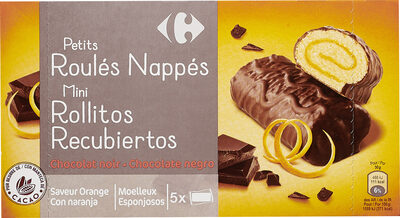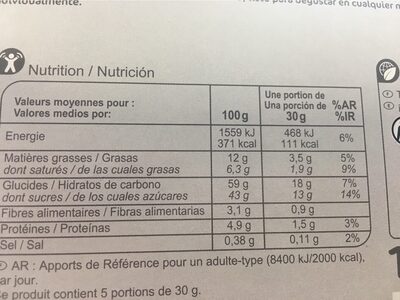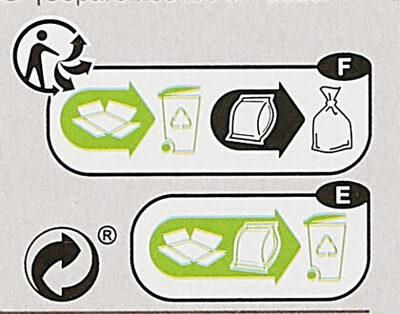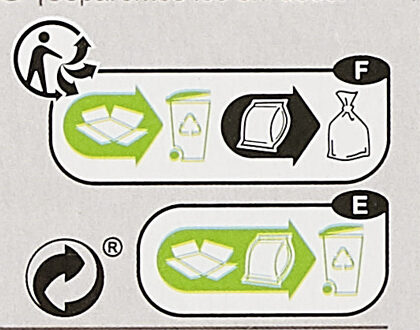Petits Roulés Nappés Chocolat noir - Carrefour - 150 g
Nota important: aquest producte ja no es ven. Les dades es conserven només com a referència. Aquest producte no apareix a les cerques habituals i no es té en compte per a les estadístiques.
Aquesta pàgina del producte no està completa. Podeu ajudar a completar-la editant-la i afegint-hi més dades a partir de les fotos ja disponibles, o fent-ne més amb l'aplicació de androide o iPhone / iPad. Gràcies!
×
Algunes de les dades d’aquest producte les ha proporcionat directament el fabricant Carrefour.
Codi de barres: 3560071082680 (EAN / EAN-13)
Nom comú: Petits gâteaux enrobés de chocolat noir avec un fourrage (23%) à l'orange aromatisée.
Quantitat: 150 g
Marques: Carrefour
Categories: Snacks, Aperitius dolços, Galetes i pastissos, Pastís, Pastissos de xocolata
Etiquetes, certificacions, premis: Fet a Itàlia
Productor: Fabriqué en Italie par / Fabricado en Italia por Bouvard Italia pour / para Interdis.
Botigues: Carrefour
Matching with your preferences
Altres dades
Altres dades: Carrefour vous propose son Petit Roulé Nappé au chocolat 100% pur beurre de cacao ! Un petit gâteau enrobé de chocolat noir qui cache une génoise moelleuse à l'orange aromatisée. De la fraîcheur et du chocolat ; une pause gourmande pour vous suivre partout avec ces 5 gâteaux emballés individuellement en sachets fraîcheur. Picto Chocolat 100% pur beurre de cacao avec petit logo Saveur orange Moelleux Picto : 5x "sachet fraîcheur"
Condicions de conservació: A conserver à l'abri de la chaleur et de l'humidité.
Servei al client: Interdis - TSA 91431 - 91343 MASSY Cedex - France
Report a problem
Fonts de dades
Producte afegit per kiliweb
Última modificació de la pàgina del producte per org-carrefour.
La pàgina del producte, també editada per autorotate-bot, carrefour, ecoscore-impact-estimator, mairoluin, openfoodfacts-contributors, roboto-app, teolemon, yuka.WVB3SEU0Y2dwOWszbXZJem9FMzRvOUF0bUpyNUFtQ0tLc1VKSWc9PQ.












